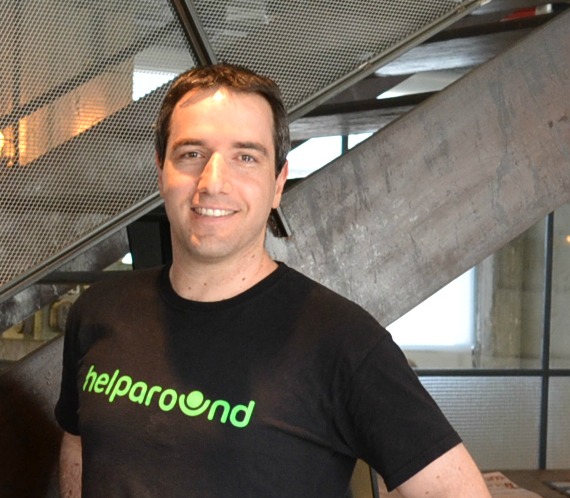Customer communities come in many varieties to help companies work one-to-one with consumers and prospects—facilitating their experiences, answering their questions, and innovating with them. Besides customers being heard and rewarded for their input, a University of Michigan study shows customers who are in these communities spend 19 percent more with the companies behind them.
Customer communities come in many varieties to help companies work one-to-one with consumers and prospects—facilitating their experiences, answering their questions, and innovating with them. Besides customers being heard and rewarded for their input, a University of Michigan study shows customers who are in these communities spend 19 percent more with the companies behind them. But the main benefit of customer communities is the consumer-to-consumer support they offer. As per Nielsen, 90 percent of consumers trust peer recommendations, while only 33 percent trust ads.
“Research has shown that peer support also drives medical outcomes,” says Yishai Knobel, CEO and co-founder of HelpAround, the first mobile platform for people with diabetes—and their friends, family, and caregivers. “Yet there hasn’t been a healthcare industry after-care solution that helps patients by connecting them to each other. We harness the superior trust, empathy, and camaraderie within the diabetes patient community, allowing members to discover peers who truly ‘get it.’”

While HelpAround is patient-to-patient, it also allows healthcare providers, brands, and retailers to join their conversations in identity-based groups, such as Type 2 Diabetes, Moms of Children with Diabetes, and Teens with Diabetes, interacting with them at critical moments when they’re seeking advice. With Medicare reimbursement now tied directly to patient satisfaction, healthcare providers benefit from a new way to engage local patients. They can also launch their own branded groups within HelpAround, further boosting patient recruitment and brand visibility—like EsTuDiabetes.org for the Spanish-speaking diabetes community and the Juvenile Diabetes Research Fund of Israel for Israelis with type 1diabetes.
Say a diabetic has a rash on their arm from their insulin pump, they can choose to hear remedies for the rash and solutions to avoid future rashes not only from other diabetics registered on the app. Brands, pharmacies, and retailers who join the community can chime in as well.
“Today, brands just pound on patients with TV ads. We’ve flipped this on its head. When patients are having a conversation, we give them the option to hear from a nearby professional. Brands, particularly pharmacies, have an opportunity to engage with patients looking for help,” Knobel says, stressing that users have full control of who connects with them. “There are no ads or tricks, no monkey business. It’s a safe place.”
The free app (Google Play and the iTunes App Store) discreetly identifies fellow “diabetes helpers” from the crowd, helping people resolve sudden health crises, like not having vital, over-the-counter supplies. Outside of emergency situations, users recommend the best local healthcare services, insurance plans, endocrinologists, pharmacies, and retail opportunities, among other beneficial information. Users login and see a nearby mix of other members personalized to their health needs and location—then HelpAround facilitates connections according to shared patient interests and needs.
Knobel recalls a story when HelpAround was in its earliest stages: A girl in Scotland posted a question at 4 a.m. asking what to do. Her mom had a hole in her foot, but doctors in Scotland were not answering their phones at that time of the morning. Those who responded to get her mom to the hospital immediately were in the U.S., where it was evening.
HelpAround member 37-year-old Craig Casselman of Ft. Lauderdale, Fla., whose 6-year-old son was diagnosed with type 1diabetes at 21 months says, “We didn’t have help when he was first diagnosed, so it’s just personally nice to help parents of recently diagnosed kids. We discuss a lot of different things and share information.”
Casselman, whose son has Florida Healthy Kids insurance, receives extra supplies every month, but when it lapsed for 30 days, he had to purchase $1,000 of diabetes supplies. You could say Casselman “gets it,” as he not only uses HelpAround to educate but to donate and mail on his own dime extra supplies, such as blood glucose test strips, to members in need.
“Something many brands and marketers forget is to pursue patients as individuals,” says Knobel, who co-founded HelpAround in 2013 with Shlomi Aflalo, former VP R&D at advertising technology startup eXelate. “They fill prescriptions and comply with meds but forget they’re people in the community. Don’t try to sell and influence, be a part of the community, add value.”
The Tel Aviv-based startup, which launched just last week on July 16, has been in quiet beta for the past six months, building thousands of users and utilizing the $550,000 it raised initially. It’s poised to open up public beta soon with the next iterations supported by a recent raise of $200,000, which will help it expand from diabetes to create networks of helpers for people with other chronic diseases and food allergies. HelpAround also recently partnered with TeamHealth to provide the first free (up to three times a month), 24/7, live phone support with registered nurses from its mobile app.
Healthcare providers, brands, and retailers can email engage@helparound.co to join the diabetes patient discussion. Everyone can watch here how the HelpAround mobile safety net catches people with diabetes when they need help.
First published at Social Media Today.